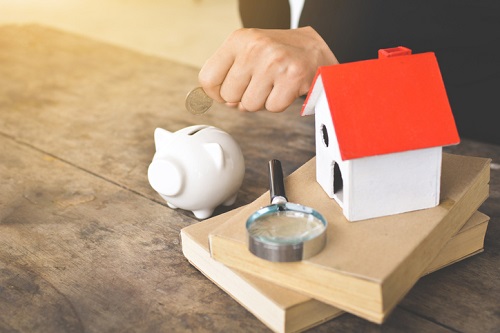
One of the pillars of buying a home is saving for a down payment. It can be overwhelming, especially for first-time homebuyers.
Saving money for a home could be as easy as making small changes to your budget or skipping some vacations. For some, it could be a bit more complicated, and a more thorough change in their financial situation may be needed to cater for a down payment.
How much do you need?
Home down payment isn’t one size that fits all homebuyers. The amount you need to save for a down payment depends on numerous factors such as the home price purchase, the type of loan you want, the loan terms, and whether you intend to put down 20% or less of your prospective home purchase.
However, you have to keep in mind that the amount of your down payment affects the property you can afford, the type of loan you can avail, and whether you need to purchase mortgage default insurance.
Minimum down payment requirements are as follow:
- For homes costing up to $500,000, the minimum down payment is 5%.
- For homes priced more than $500,000 but less than $1 million, the minimum down payment is 5% of the first $500,000 plus 10% of the remaining balance.
- For homes that cost $1 million or more, the minimum down payment is 20%.
Note that if you are self-employed or have a bad credit history, your lender may require you to put a bigger down payment for a home. Normally, your down payment should come out of your own pocket, so it may be better to plan ahead and save for a down payment before applying for a mortgage.
Bigger down payment may be beneficial
Should you opt to put down a bigger home down payment, it may help you minimize the amount you need to borrow. This means you may be able to pay less for the interest of the loan and may benefit from lower monthly payments.
Here are some of the advantages of putting a larger amount for a down payment:
- Lower interest rates: You may be able to get a lower interest rate if you choose to put a larger amount for a down payment.
- Shorter loan term: Bigger down payment may help shorten the length of your loan term while keeping the monthly payment sensible.
- Reduced monthly payment: Simply put, a bigger down payment will decrease the amount you have to pay for your monthly repayments.
- Mortgage insurance: You may be able to avoid paying for a CMHC insurance should you opt to put down 20% of the purchase price of your prospective home. This will save you money in the long term as you do not have to pay for the insurance on top of your down payment.
- Better borrowing power: Bigger down payment may also strengthen your borrowing power, making it easier to qualify for a loan. Lenders view a bigger down payment as a sign that you are financially responsible and that you can meet your payment obligations.
Saving for a home down payment
There are many ways you can save for a home down payment — it could be small or big changes. The important thing is you have to be committed and patient to reach your goal.
Here are a few things you can do to save for a down payment:
- Pay off your debts. To save some money, consider paying off your debts to avoid paying for higher interest rates. This would also make your credit history look a lot better in the eyes of the lenders, as it shows that you are responsible for paying off what you owe.
- Borrow from your RRSP. You may withdraw up to $25,000 from your RRSP to purchase your first home. This may be a great way to come up with a down payment for a home. For more information, you may visit the Government of Canada’s official website.
- Use a tax-free savings account. Your savings may be able to grow faster if you opt to put it on a tax-free savings account because you won’t have to pay income tax for the money you earn as it grows into this account.
- Make a few lifestyle changes. Small financial changes without sacrificing comfort may be the way to go to save more for a down payment. Skip a few vacations if you go multiple times a year, go thrifting instead of buying new clothes, or try cooking at home more often instead of eating out a lot — these are just some things you can do to save a bit more for a down payment.



